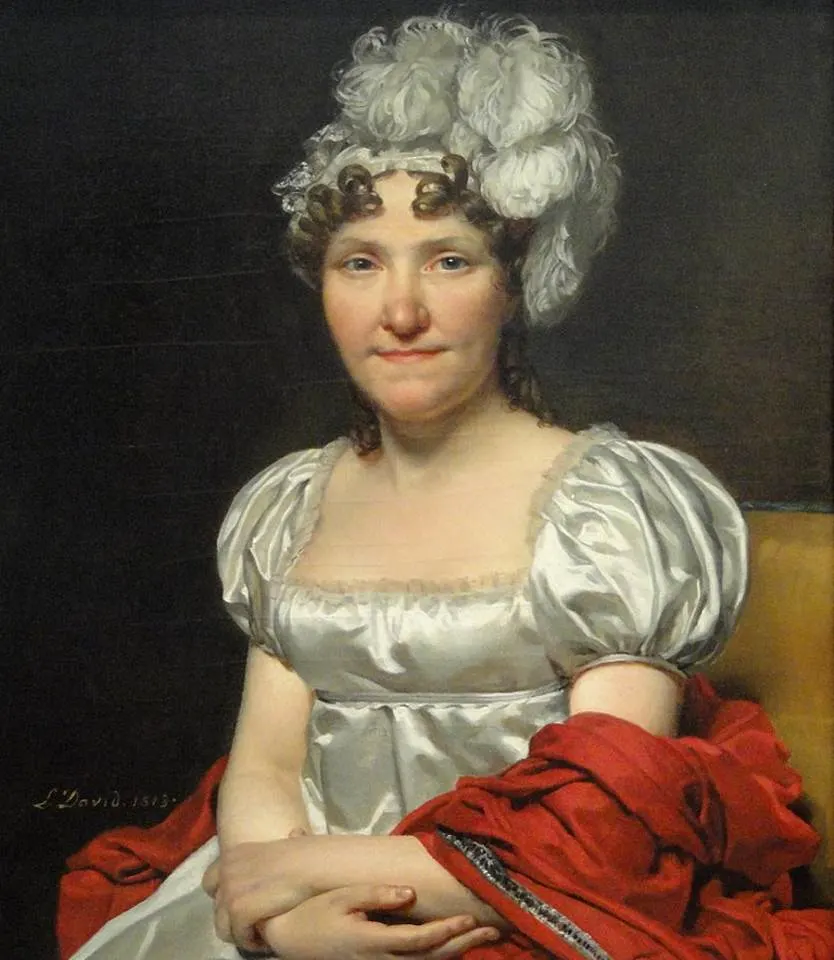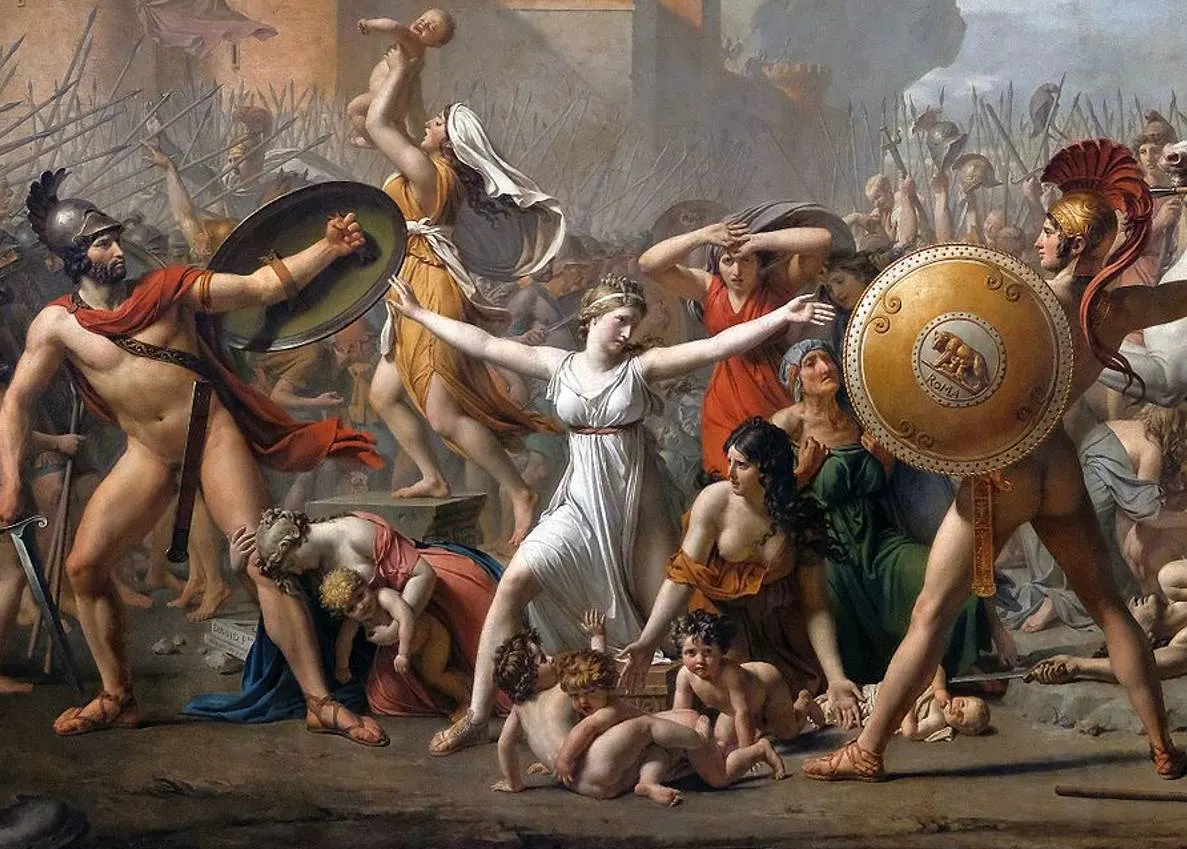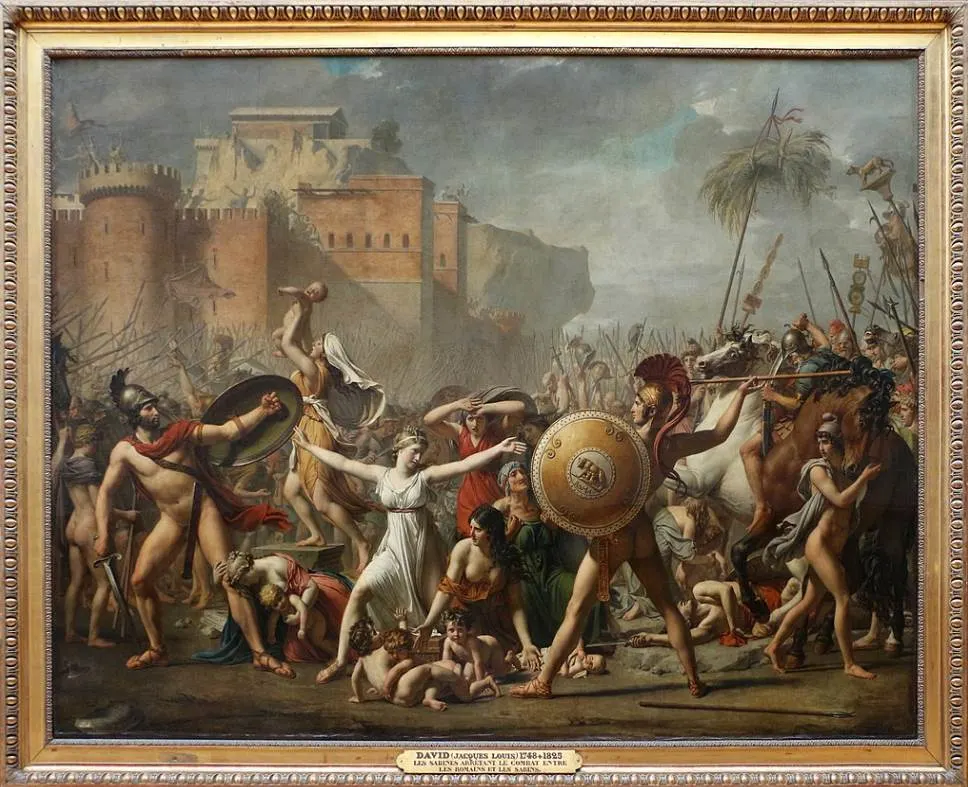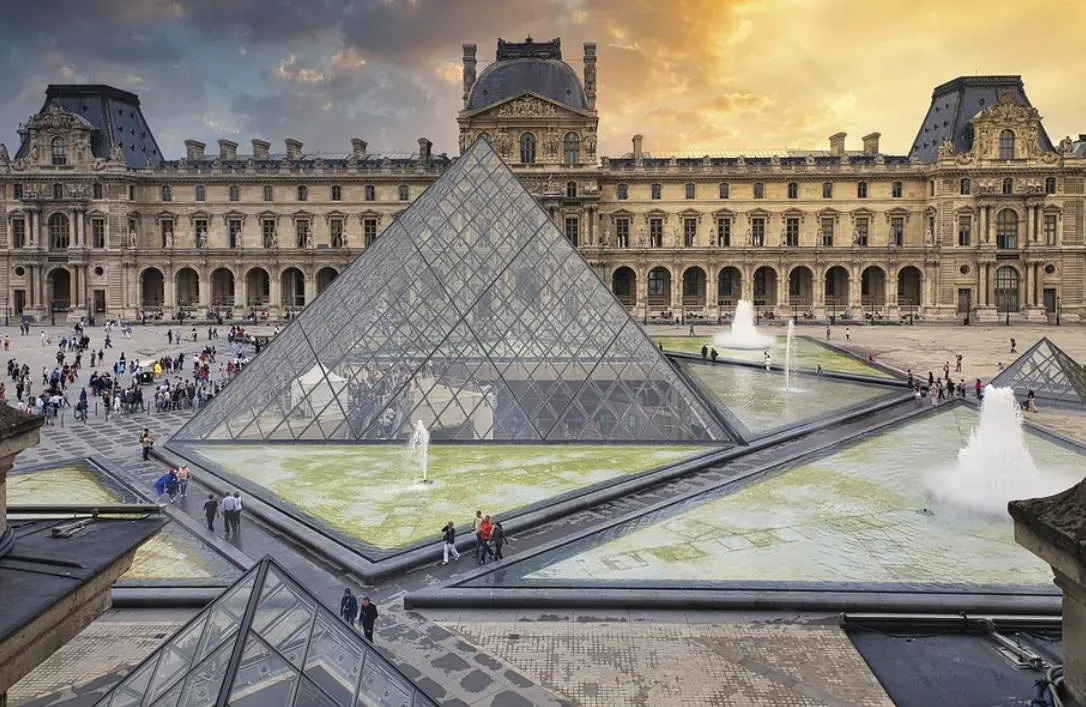When the wife of a famous French artist visited him in jail, he conceived the idea of a work that became one of his most famous paintings.
Jacques-Louis David (1748-1825) was deeply involved in the French Revolution during the 1790s and he barely escaped the guillotine at the end of the so-called Reign of Terror.
The story behind the painting wasn’t the only reason why it was such a significant painting in art history, as you’ll soon discover.
In this article, we take a closer look at some of the most interesting facts about The Intervention of the Sabine Women, one of David’s ultimate masterpieces.
1. It was completed during a turbulent time in the final years of the 18th century
The French Revolution broke out in 1789 and it was followed by a long period of political instability in France. Jacques-Louis David was a Neoclassical artist who became personally involved in these events.
He became friends with Maximilien Robespierre (1758–1794), one of the most influential people of the Revolution who ended up being guillotined himself.
It’s only because he didn’t feel so well on the night that Robespierre was arrested that David escaped the dreadful guillotine himself.
He was imprisoned twice during this period at the Luxembourg Palace, a place that was pretty comfy compared to other notorious prisons in the late 18th century.
He started working on this Neoclassical painting titled The Intervention of the Sabine Women in 1795 and completed this monumental work of art in 1799.

2. It depicts a story from Roman mythology that took place when Rome was founded

The chaotic composition of this painting by David depicts a scene related to one of the most popular stories from Roman Mythology in the history of art.
The abduction of the Sabine Women presumably took place around the time that the city of Rome was founded in the 8th century B.C.
We can see the Sabine Women who position themselves between the Roman and Sabine men who are in battle following this incident.
The rocky outcrop in the background is the so-called Tarpeian Rock. This was the place where deflectors were executed for treason by being thrown from it.
It was named after the Vestal Virgin named Tarpeia who committed treason by allowing the Sabines access to the city.

3. It was inspired by a visit from his wife who had just recently divorced him
Jacques-Louis David got married to a woman named Marguerite-Charlotte Pécoul (1764-1826), a woman nearly twice as young as him at the time of their marriage in 1782.
She was a humble Royalist who didn’t appreciate her husband’s radicalization during the early phase of the French Revolution.
The fact that David had voted in favor of the execution of King Louis XVI was the final nail in their marriage’s coffin and she filed for divorce in 1793.
His political views didn’t change his personal feelings for his wife, though. She visited him in jail and inspired him to start working on this painting.
This means that it was painted in honor of his wife and to emphasize that love prevails over war and political conflict. They remarried in 1796 and stayed together for the rest of the artist’s life.

4. The work was a sequel to a similar 17th-century painting by Nicolas Poussin
The story about the Sabine Women had been depicted multiple times already. One of the most notable works was a painting by Poussin titled “The Abduction of the Sabine Women” (1633-1634).
Nicolas Poussin (1594-1665) was another French artist who spent most of his career in Rome. He was the leading figure of the French classical Baroque period.
David admired Poussin and this painting can be seen as a sequel to Poussin’s work.
It features a similar chaotic composition in which Romulus gives the signal for the abduction of the Sabine Women to start.

5. The main figure in the painting is Romulus’s wife named Hersilia
The most prominent figure in this painting is the woman wearing white clothes and with her arms spread wide.
She represents Hersilia, the wife of Romelus and the daughter of Titus Tatius, the leader of the Sabine tribe.
Romulus is about the throw his spear toward Titus Tatius who leans back in anticipation. Hersilia manages to stop him and as such ends the war between Rome and the Sabines.

6. David marketed his painting and it was sold for a huge amount 2 decades later
One of the most remarkable facts about The Intervention of the Sabine Women is that this wasn’t a painting that was commissioned by a patron.
Jacques-Louis David conceived the concept himself and also produced marketing materials to promote it. This hadn’t been done before because historical paintings on this scale were usually commissioned.
The painting was exhibited in 1799 and attracted a lot of eyeballs. It didn’t sell at the time but about 2 decades later, it was already a very famous work of art.
He completed another painting titled “Léonidas at Thermopylae” in 1814 and both works were sold for the astronomical sum of 100,000 francs in 1819.

7. How big is The Intervention of the Sabine Women by Jacques-Louis David?
One of the main reasons why this was such a remarkable work of art is because of the sheer size of this painting, especially considering that it wasn’t commissioned.
We can only imagine that David wanted to make a statement to his wife. This clearly worked because the couple got back together in 1796.
The Intervention of the Sabine Women by Jacques-Louis David is a huge oil on canvas painting that has dimensions of 385 × 522 centimeters (152 × 206 inches).

8. Where is the painting located today?
The painting was exhibited at the Louvre Museum in 1799 and 1804 and was also exhibited at the Paris Salon of 1808.
The painting was purchased by King Louis XVIII following the Fall of Napoleon and was initially exhibited at Luxembourg palace, the place it was conceived.
It later entered the collection of the Louvre Museum and can still be admired at the most-visited museum in the world today.

